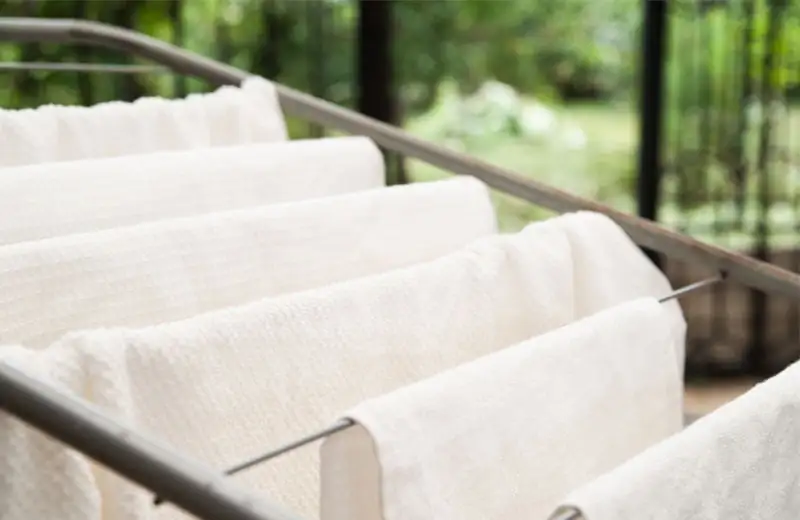İngilizce Yazılar, Tavsiyeler
How to Dry a Wet Towel Quickly
A wet towel is a useless towel. It’s terrible at the one thing it’s supposed to do, which is to dry things. In fact, it can be argued that it makes the situation worse rather than better. You reach for your towel-on-duty after a nice, long, relaxing bath and find out you are more of a towel to it than it is to you. How disappointing. So, it is best to convert any such soaked towel into something useful as soon as possible. Below are some of the steps you can take to speed up the process of drying a wet towel.
Wring It
The obvious out of the way first. One easy way of getting rid of some of the moisture in a wet towel in a matter of seconds is to just wring them long and hard. This is a good first step no matter what you intend to do next.
Nothing Beats a Good Old Dryer
Of course, the easiest way to dry most anything is to just chuck them into a tumble dryer. If you don’t have one, however, you can still substitute it with something you are very likely to have. The hairdryer. As long as you keep it at a safe distance and are careful not to overheat your hairdryer or the fabric, it should provide a quick, effective solution. Make sure not to target a single spot for too long to avoid causing a fire as some fabrics can be prone to catching fire.
Shake Your Wet Towel
If you give your towel a good shake or two, it will speed up the drying. This works in two ways. First of all, you are mechanically forcing out some of the moisture, leaving the towel a tiny bit drier. Secondly, you are reducing wrinkles, marginally increasing the towel’s surface area.
Lay Your Wet Towel on a Dry One
Diamond cut diamond, as the saying goes. If you have an already dry towel lying around, you can use it to dry the wet one quicker. Just lay the dry one on a flat surface, and the wet towel on top of it. Make sure to spread them out as much as possible to expose more of the wet surface to the air.
Bring Out the Iron

If you are really in a hurry, it’s time to involve something a bit more powerful. Ironing works great for quickly turning much of the moisture into steam. The issue is that, if you put your iron directly on your wet towel, it might damage the fabric. Better to lay a dry towel on top of your wet towel as a layer of protection, then iron the dry towel instead. This additional towel will also absorb some of the steam and moisture leaving the fabric.
Rods over Hooks
After you are done with any number of the above steps, it is time to leave your towel out to further dry on its own. What you need to primarily focus on is to make sure it is completely unfolded. Wrinkles on a towel not only slow down the drying but also can lead to bacteria and mold growing if left unattended for too long. One classic mistake is to hang your towel on a hook. Hooks create too many nooks and crannies on the surface for effective drying. A better option is to hang your towel on a horizontal rod. This significantly reduces the time it takes to dry wet fabric because of the way it evenly spreads the surface and also allows easy air circulation.
And that’s it! Short of a quality tumble dryer to rely on, the above tips will help you out in a pinch.
With all that said, if you are having wet towel problems too often, you might want to look into products that don’t hold much moisture to begin with. Our colorful range of beach and bathroom towels, for example, are made in the traditional Turkish way that makes them very easy to dry thanks to being 100% cotton and having been flat-woven.


